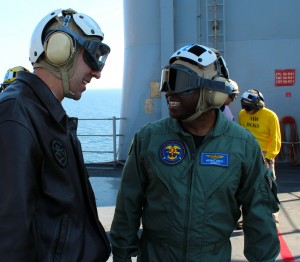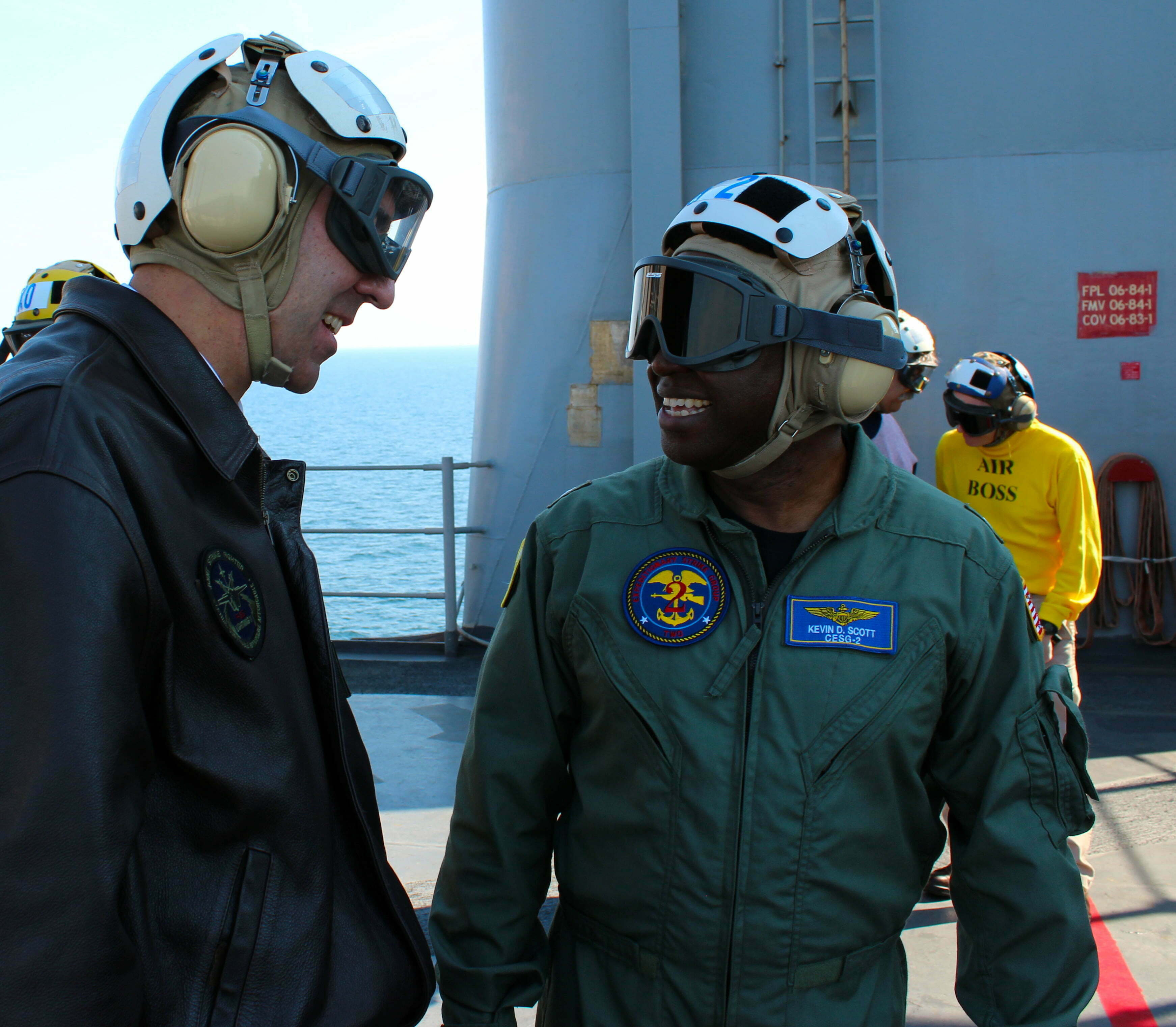10/30/2011 Aboard the USS Wasp during F-35B sea trials, Second Line of Defense had a chance to talk with Admiral Scott, Commander of Expeditionary Strike Group Two. The navy leadership aboard the WASP made it clear that V-22/F35B tandem was central to the future of the US Navy. There was no confusion on this point. Too often, critics focus solely on their views of the plane and miss the entire point of its impact on the capabilities of the entire fleet afloat.

This point is not lost on Admiral Scott. In many ways, the key focus is really upon what a technology or capability provides for the operational commander. “No platform fights alone” is really the point and some technologies and capabilities really can expand the options for the fleet commander or the National Command Authority. The F-35B is clearly a central force enhancer, multiplier and fleet capability change agent.
SLD: What is your current position and background?
Admiral Scott: I am Commander of Expeditionary Strike Group Two. We are one of four strike groups around the world. We’re the East Coast strike group that operationally controls all the East Coast amphibious ships. We are based in Norfolk, Virginia.
I’m a NH53 pilot by background, specifically the mine warfare variant of those aircraft. Most, if not all, of my at sea career has been on amphibious ships. From early operations in the tanker wars all the way up to today, that’s my experience. I flew as a young JO, the ACE aircraft, or what we used to support us, in terms of Harriers, Cobras, Hueys, etc.
SLD: So largely a helo orientation?
Admiral Scott: Yes. If you remember, because of other issues, the Harriers didn’t routinely deploy with the ACE. They jetted out and then they joined us periodically. And that was our strike capability along with our Cobras and our Huey attack aircraft.
SLD: So let us fast forward to when you have two new aircraft, the MV-22 and the F-35B, what will be different from your point of view?
Admiral Scott: The flight deck would be the same as any other flight deck from any other generation. It would also be a little crowded, but it would operate the same. The same types of things you see on a flight deck today are what you would see. Some of the things we’re going to work out for the long term is the eventual footprint of the support equipment and the aircraft and work those things out.
But operationally, if you look down from 20,000 feet down at the yard view, you won’t see a lot of difference in terms of the look and construct of movement and handling of aircraft. It will be the same old thing.
But from an operational standpoint, as a Strike Commander, it gives me incredible flexibility. From the very non-kinetic tasks and all the way to full combat operations, now I can pretty much cover or self-sustain that full spectrum. This aircraft, this fifth generation fighter, with its V-STOL capability, now allows MEU to operate in that realm. It has increased communications capability; it has increased connectivity, and not only to other joint US aircraft, but coalition aircraft. That takes it and takes us to a new level of combat effectiveness.
And the connectivity, of course, is not among aircraft, as good as that will be, but with the ground element as well. And to simultaneously sync that information up, to give me, the Operation Commander, the full battle space picture. I didn’t have that before.
Strategically, for our Commanders and our Commander in Chief, it gives them another whole set of options. Today, you have to align so many different power packages to get an effect that you want. With this capability for the MEU, combined with the V22, now it gives, whether you’re talking to the Maritime Component Commander or you’re talking to the President of the United States, them the flexibility for the maritime option aside from what traditionally would have been the carrier strike group.
You can adapt a force package based upon what you want to put on the big-deck and how you want to distribute that among the LPDs. Flexibility is what we do and how we adapt. This aircraft with the V-22 expands significantly my flexibility and capability.


